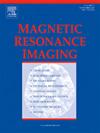Comprehensive characterization of tumor therapeutic response via simultaneous mapping of cell size, density, and transcytolemmal water exchange
IF 2
4区 医学
Q2 RADIOLOGY, NUCLEAR MEDICINE & MEDICAL IMAGING
引用次数: 0
Abstract
The evaluation of tumor response to neoadjuvant chemotherapy is critical for the personalized management of cancer patients, aiming to minimize unnecessary toxicity, costs, and treatment delays. Current imaging techniques primarily depend on detecting tumor volume changes, which reflect downstream effects. In contrast, advanced microstructural diffusion MRI (dMRI) methods offer cellular-level insights but are limited by biased estimates of cell density due to oversimplified biophysical models. We present a novel dMRI-based approach, EXCHANGE, which incorporates transcytolemmal water exchange into a quantitative multi-compartmental biophysical model. This method enables simultaneous mapping of cell size, density, and transcytolemmal water exchange, providing a comprehensive characterization of tumor microstructure. Validation through computer simulations and in vitro studies demonstrated the good accuracy of EXCHANGE-derived metrics. In a proof-of-concept study, EXCHANGE was applied to animal models and patients with triple-negative breast cancer, showcasing its potential to evaluate tumor therapeutic response to neoadjuvant chemotherapy. EXCHANGE offers a unique capability to characterize tumor microstructural properties at the cellular level, paving the way for improved monitoring of treatment response in clinical settings.
通过同时绘制细胞大小、密度和经细胞乳质水交换图,全面表征肿瘤治疗反应。
评估肿瘤对新辅助化疗的反应对于癌症患者的个性化管理至关重要,旨在最大限度地减少不必要的毒性、成本和治疗延迟。目前的成像技术主要依赖于检测肿瘤体积的变化,这反映了下游效应。相比之下,先进的微结构扩散MRI (dMRI)方法提供细胞水平的见解,但由于过度简化的生物物理模型而受到细胞密度估计偏差的限制。我们提出了一种新的基于dmri的方法EXCHANGE,该方法将经细胞膜水交换纳入定量的多室生物物理模型中。这种方法可以同时绘制细胞大小、密度和经细胞间膜水交换,提供肿瘤微观结构的全面表征。通过计算机模拟和体外研究的验证表明,交易所衍生的指标具有良好的准确性。在一项概念验证研究中,EXCHANGE应用于动物模型和三阴性乳腺癌患者,展示了其评估肿瘤对新辅助化疗治疗反应的潜力。EXCHANGE提供了在细胞水平上表征肿瘤微观结构特性的独特能力,为改善临床环境中治疗反应的监测铺平了道路。
本文章由计算机程序翻译,如有差异,请以英文原文为准。
求助全文
约1分钟内获得全文
求助全文
来源期刊

Magnetic resonance imaging
医学-核医学
CiteScore
4.70
自引率
4.00%
发文量
194
审稿时长
83 days
期刊介绍:
Magnetic Resonance Imaging (MRI) is the first international multidisciplinary journal encompassing physical, life, and clinical science investigations as they relate to the development and use of magnetic resonance imaging. MRI is dedicated to both basic research, technological innovation and applications, providing a single forum for communication among radiologists, physicists, chemists, biochemists, biologists, engineers, internists, pathologists, physiologists, computer scientists, and mathematicians.
 求助内容:
求助内容: 应助结果提醒方式:
应助结果提醒方式:


